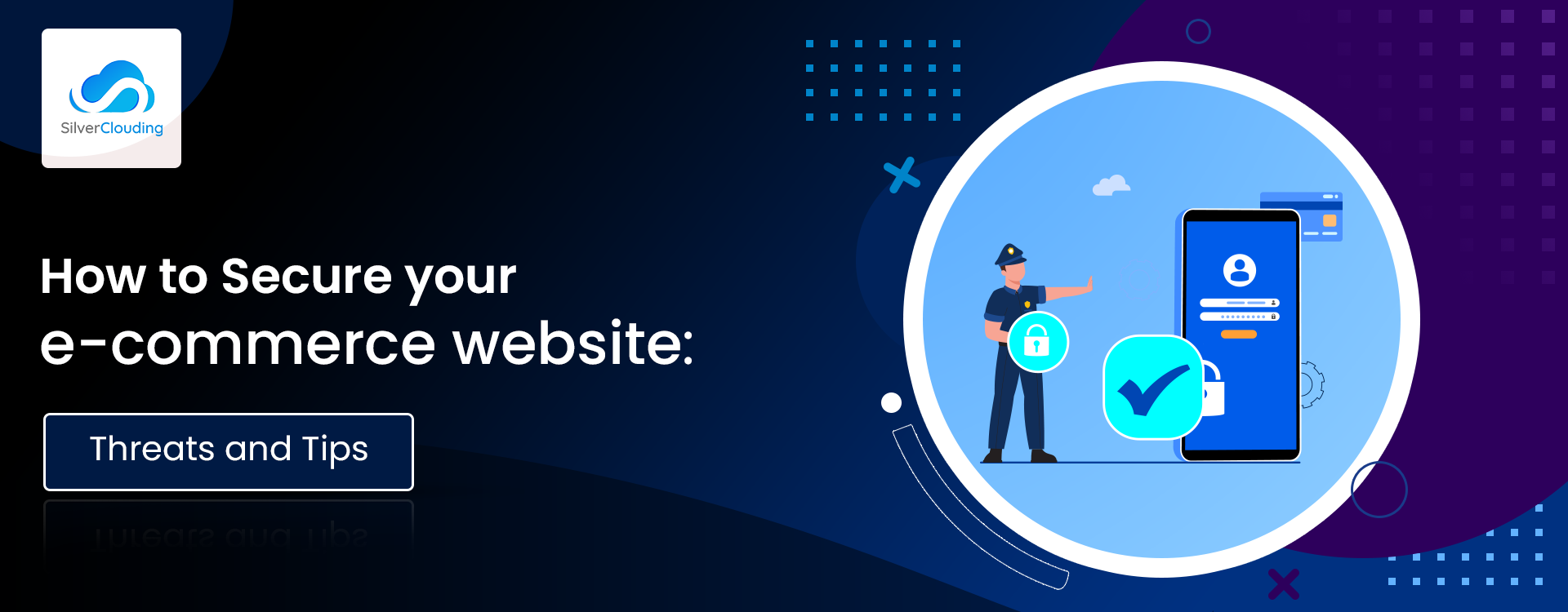In today’s digital age, nearly every day, we hear about someone or some group breaking into a website and stealing credit cards or other sensitive data from ecommerce sites. Cybercriminals are becoming increasingly sophisticated in their methods making it more important than ever to prioritize website security and protect your customers’ information.
Ecommerce security is a collection of rules ensuring that online transactions are secure. Online retailers must protect themselves from cyberattacks like physical stores do by investing in security guards or cameras to deter theft.
In this blog, we’ll explore the most common security tips for the threats we discussed in our latest LinkedIn post faced by ecommerce stores in India. Take your time – read on to safeguard your ecommerce store online today!
Types of security threats and their solutions to an ecommerce business
Businesses must protect themselves against ecommerce attacks, which can take various forms from harming their platform to stealing their customers’ personal information.
Maintaining up-to-date knowledge of new types of fraud and cyberattacks is essential to earn and keep customer trust. The World Bank has estimated that by 2023, targeted cyberattacks could put approximately USD 5.2 trillion of global value at risk.
#Threat 1: Injection attacks include SQL injection. When an attacker submits maliciously constructed inputs, injection attacks happen, which force a program to take an undesired action. SQL injection is one of the most prevalent internet attack types due to the prevalence of SQL databases.
Checking your codebase for SQL injection vulnerabilities should be your priority if you only have time to secure against one vulnerability.
Solution: By using parameterized database queries with bound, typed parameters and cautiously using parameterized stored procedures in the database, developers can prevent SQL Injection vulnerabilities in web applications.
Many programming languages, including Java,.NET, PHP, and others, can accomplish this.
The following actions can be taken by developers, system administrators, and database administrators to reduce attacks or the effects of successful attacks:
- Ensure that all software components of online applications, including libraries, plug-ins, frameworks, web servers, and database servers, are up to date with suppliers’ most recent security updates.
- Use the least privilege principle(link is external) when creating the accounts that will be used to connect to the SQL database. Don’t grant INSERT, UPDATE, or DELETE capabilities to a website’s database connection credentials, for instance, if the website needs to use SELECT queries to obtain web content from a database. The proper account database roles can often be used to manage these privileges. Never enable an administrator connection to the database for your web application (the “sa” account on Microsoft SQL Server, for instance).
#Threat 2: A brute force attack is a hacking technique that employs trial and error to break encryption keys, passwords, and login credentials. It is a straightforward but effective strategy for getting unauthorized access to user accounts, company systems, and networks. When they discover the proper login information, the hacker tries a variety of usernames and passwords, frequently utilizing a computer to test a wide range of combinations.
Solution:
- By promoting strong password best practices, such as using lengthy, complicated, and unique passwords for each account, avoiding using widely used passwords, and using a password manager, organizations can defend themselves against brute force assaults.
- Using high encryption rates, salting the hash, using multi-factor authentication (MFA), limiting login attempts, using CAPTCHA to support logins, using an Internet Protocol (IP) blacklist, and deleting unused accounts are additional strategies that organizations can use to protect user passwords better.
#Threat 3: A DoS assault, a denial of service attack, involves flooding a server with TCP and UDP packets using a computer. A DDoS assault occurs when several systems launch DoS attacks on a single system. The targeted network is then inundated with packages coming from various places.
Solution: Preventive methods like network monitoring, simulating DoS assaults, and post-attack response are steps to reduce the harm caused by DoS attacks. Network monitoring can assist in spotting attack indicators before a service outage occurs, and testing your DoS defences can help you improve your overall strategy. A post-attack approach can mean the difference between a minor inconvenience and a catastrophic strike. A post-attack plan should include protocols for customer assistance and assigning team tasks.
#Threat 4: The term “Magecart” refers to several hacker groups who use online skimming methods to steal personal information from websites, most frequently customer information and credit card details on websites that accept online payments. Magecart gangs have compromised well-known brands.
Solution: Conventional cybersecurity measures like Web Application Firewalls cannot defend against Magecart attacks and digital skimming on the client side. Several businesses bet on static site scanning while needing to be made aware of the dynamic nature of Magecart attacks.
Technologies like sandboxing continuously break integration/constant deployment cycles and substantially hinder the website development process. The first line of defence for many web application security experts is content security policies (CSP). CSPs, which were initially designed to prevent cross-site script execution, require extensive customization. The use of a compromised trusted domain to introduce a skimmer onto the website is not protected by CSPs alone.
#Threat 5: Phishing uses fake emails, messages, or websites to trick customers into divulging personal and financial information.
Solution: Never respond to unsolicited phone or online solicitations for personal information. Make contact with the financial institution using the information provided. Passwords and account details shouldn’t be shared online. Regularly review account statements and look out for unusual behavior. If statements are delayed, contact the banking institution.
Conclusion
Building scalable and secure websites is essential in the modern digital era, especially for ecommerce companies. Using the most recent technology and adhering to best practices are crucial for ensuring the security of your website, which SilverClouding can help your business. E-commerce security is the safeguarding of e-commerce assets against unauthorised access, use, modification, or destruction. We at SilverClouding implement robust security measures and best practices to safeguard your ecommerce store against cyber threats and ensure the safety of your customers’ data.





How to Secure your e-commerce website: Threats ...
[…] Building scalable and secure websites is essential in the modern digital era, especially for ecommerce companies. Using the most recent technology and adhering to best practices are crucial for ensuring the security of your website, which SilverClouding can help your business. […]